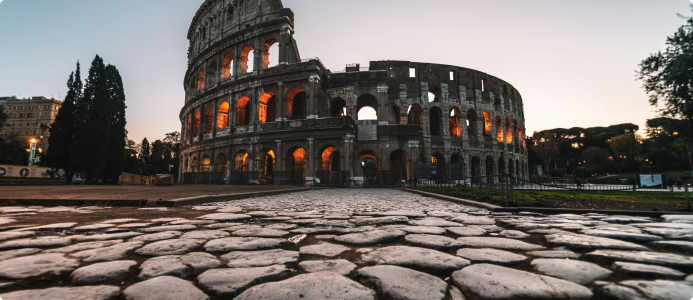The History of Venice: Italy's Historic ‘Floating City’

Introduction
Venice, famously known as the "Floating City," has a fascinating history that dates back centuries. Its name comes from the ancient Veneti people who lived in the region by the 10th century BCE. Over time, Venice has been called many names, including "La Dominante," "Serenissima," "Queen of the Adriatic," and "City of Canals."
Once the capital of the Republic of Venice, it was one of the most powerful city-states in the Mediterranean. Venice played a crucial role in the Middle Ages, especially during the Crusades, thanks to its strong naval presence. Despite challenges such as the Black Death and conflicts with neighbours in the 14th century, Venice remained a maritime power.
Although its economic significance declined with the discovery of new trade routes, Venice remained influential. In the 18th century, it fell under Austrian rule but later became part of Italy and saw a resurgence in tourism in the 19th century. Venice is now renowned for its architecture, canals, and cultural heritage.
The Roman Era

The Origin and Early History of Venice
Unlike other big cities in Italy, Venice grew after the Roman Empire fell. It began in the coastal lagoons during Roman times, where small fishing communities first settled. In the 5th century AD, barbarian tribes attacked the Western Roman Empire. This pushed the Veneti tribe from northeastern Italy to seek safety in the lagoons.
They fled because of invasions by the Huns, Goths, Eastern Romans, and Lombards. Venice is thought to have started around 421 AD when the Veneti escaped from Vandal invaders. Early settlers lived on small islands, mudflats, and sandy banks in the Venetian lagoon. Settlements around Torcello and Malamocco on the Lido date back to the 7th century.
Under the Byzantine Wing
These early Venetians weren't entirely on their own. They fell under the rule of the Eastern Roman Empire, also called the Byzantine Empire. The Byzantines appointed a doge, or duke, to oversee the island communities.
This early doge wasn't quite the powerful leader you might imagine. He answered to the Byzantine emperors in Ravenna, on the Italian mainland.
By the 8th century, things started to change. The grip of the Byzantines weakened, and Venice craved independence. In 727, the Venetians even elected their own doge (leader), Orso, in an act of defiance. The Venetians were led by a Doge, an elected official who held significant power.
This marked the start of a thousand-year-long republic, a government ruled not by a king, but by the people of Venice. But, it took some time for Venice to fully break free. For many years, there were political battles between groups supporting and opposing Byzantine influence.
A City Takes Shape

Finally, in the early 9th century, Venice found its footing. The doge, Obelerio, allied with the Frankish king of Italy to throw off Byzantine control. The Rialto islands, then a growing center of trade, became the new seat of government.
While Venice wasn't officially under the Byzantine thumb anymore, it wasn't exactly beholden to the Franks either. This unique position, nestled between two empires, made Venice a natural trading hub.
The New Order
When family factions lost control, a new government system started under Doge Domenico Flabanico (1032-1042). He restored the people's right to choose the doge, though this mostly involved residents of Rialto and a few nobles. The ducal council became the main executive body, and a lawmaking group approved the doge's decisions.
During Doge Domenico Contarini's rule (1043-1070), Venice built a new church for St. Mark, which became a symbol of the city's spirit. Contarini strongly defended Venice's religious freedom, marking a significant moment in its history.
The Birth of the City of Venice (9th-10th Centuries)

As Venice's power and wealth grew, its scattered island communities needed a central hub. Enter Rialto, a group of islands that became the heart of the city. Canals were dug, bridges were built, and grand buildings rose from the water. This wasn't just a marketplace anymore; it was a city – the city of Venice.
The Venetians took pride in their independence. They weren't beholden to any empire; they were their own masters. This fierce sense of self-reliance fuelled their spirit of innovation. They developed a unique system of government, a balance between the power of the doge and the will of the people.
Religion also played a significant role. Churches were built showcasing the city's growing wealth and artistic prowess. By the 10th century, Venice had transformed from a collection of refugee settlements into a thriving metropolis. The foundations were laid for a glorious future, a future where Venice would become a maritime superpower and a cultural icon.